Author: Yuri Pasholok
Hello everyone,
Yuri Pasholok posted a set of interesting materials from IS-3 “pike nose” testing. Here’s what he posted:
The first part of the document states that the hull armor elements were tested under following angles (from the axis of the vehicle, eg. 0 means shooting directly from front, 320 means it is being shot from the left side unde 40 degrees)
Upper frontal plates – 0 and 320
Lower frontal plate – 0
Side plate above tracks – 90 and 270
Sides – 90, 120, 135, 210
Lower rear plate – 180
The hull was tested against fire of German 75mm and 88mm and Soviet 122mm guns. The report states that the new “pike” frontal armor significantly increases the protection compared to the old IS-2 frontal armor. Frontal plates fully protect the crew aginst fire from 88mm German armor-piercing shells from 100 meters under any angle, while the upper frontal plate of IS-2 protects only on distances of 600m and higher. The picture shows the result of 88mm hitting the meeting place (weld) of the upper frontal armor plates.
On the picture above it is shown that the upper frontal plate is penetrated by Soviet 122mm AP “sharp-tipped” shells on distances of 900m and closer (under 320 and 40 degrees angle, meant from the vehicle axis). Under 0 degrees angle (from front), APCBC “blunt” (soft-capped for better “bite”) 122mm shells penetrate it on distance of 200m and closer.The upper frontal armor of “tank 70I” (Object 701, eg. IS-4) is not penetrated by 122mm AP shells under any angle.
Either way, upper picture shows 122mm AP hits on upper frontal plate (from 320 degrees), the second picture shows the effect of the same shell, when fired from a spot in front of the vehicle.
The lower frontal plate (from the front – 0 degrees) is penetrated by the German 88mm shells at distance of 300 meters, while it doesn’t penetrate only at the distance of 1700 meters. Analogical part of IS-2 hull protects from penetration only on distance of 5100 meters and higher. The lower frontal plate of Object 71 is not penetrated by the same shell at 100m.
The photo should show the penetrations of 88mm shells of lower frontal plate, but I can’t see anything there. Under the photo, the text says that the sloped armor plates above the tracks do not get penetrated by German 88mm guns on distances of 200 meters or higher. 122mm AP shells do not penetrate the plate on distances of 900 meters. The side and rear of the hull do not differ in construction and thickness from an IS-2 hull
The picture above is from tests that took place in March 1945 – it shows the overview of the 90mm side armor, hit by an 88mm AP shell at 400 meters. Three track links have some small damage.
This table shows the test results of firing test on two IS-3 hulls (basically what was described above).

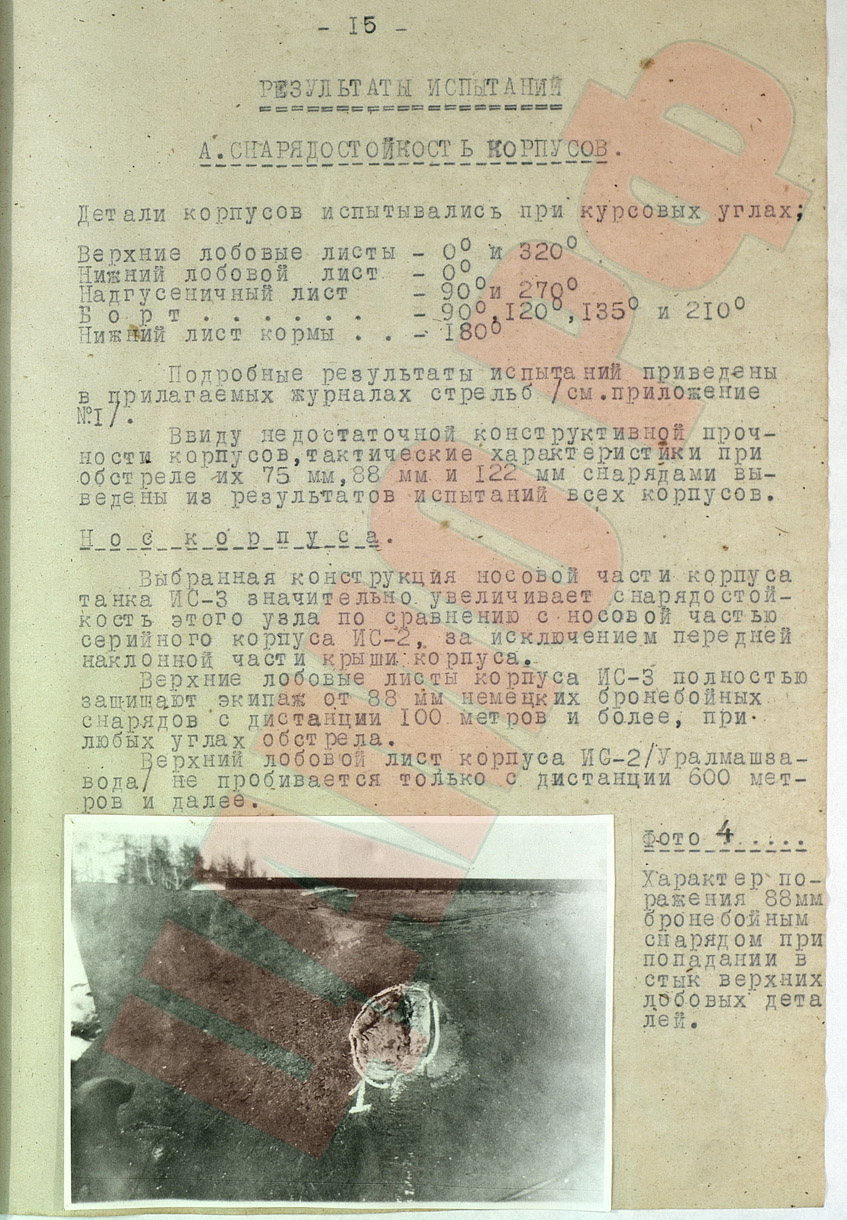
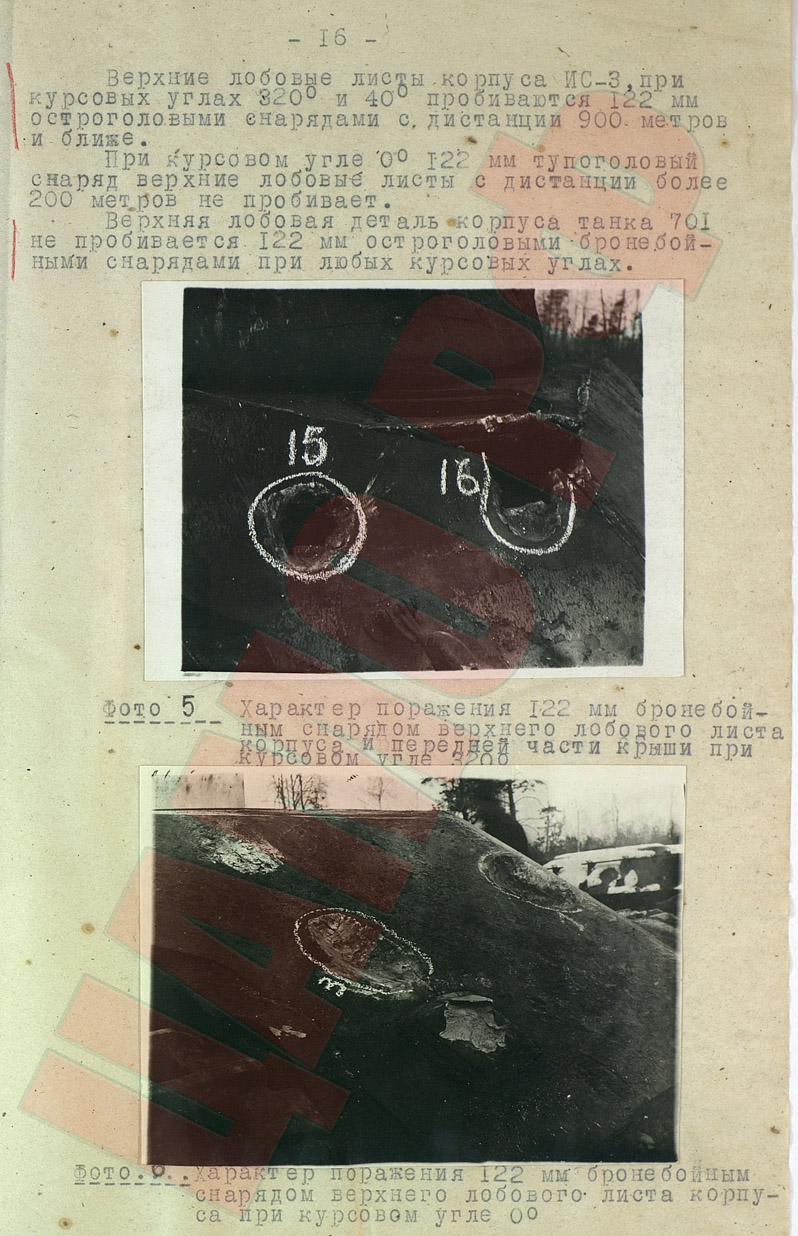
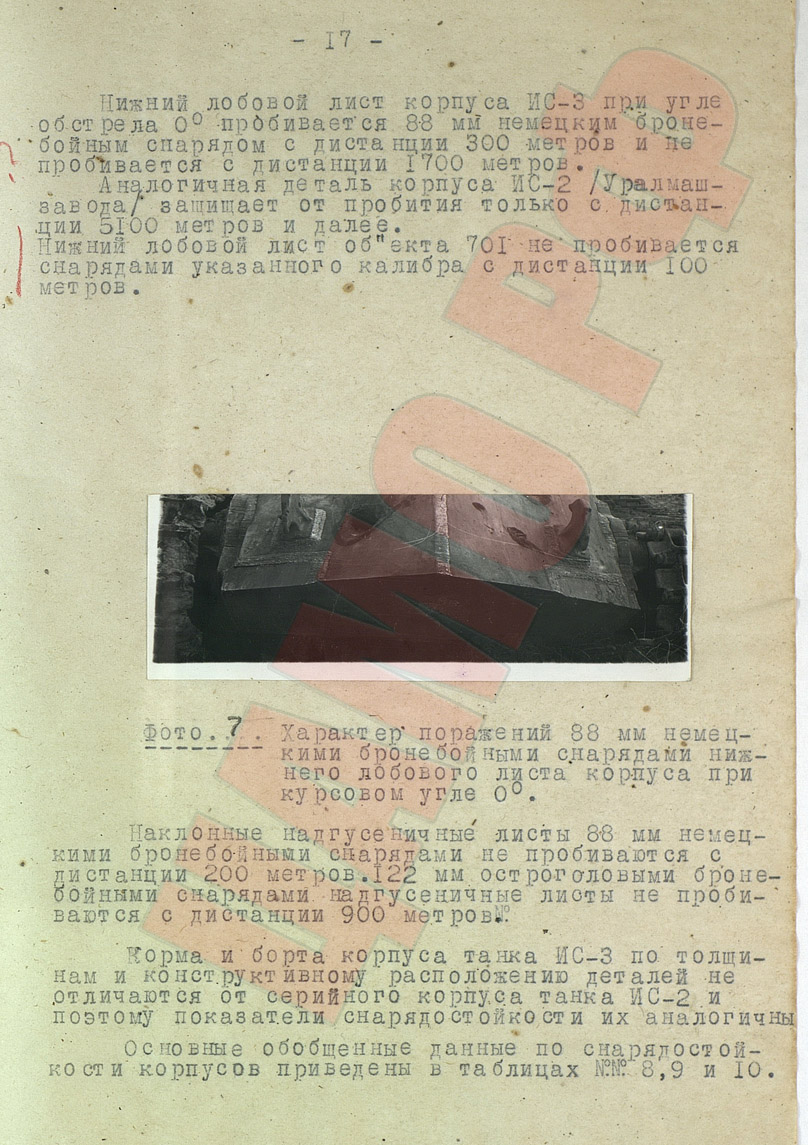
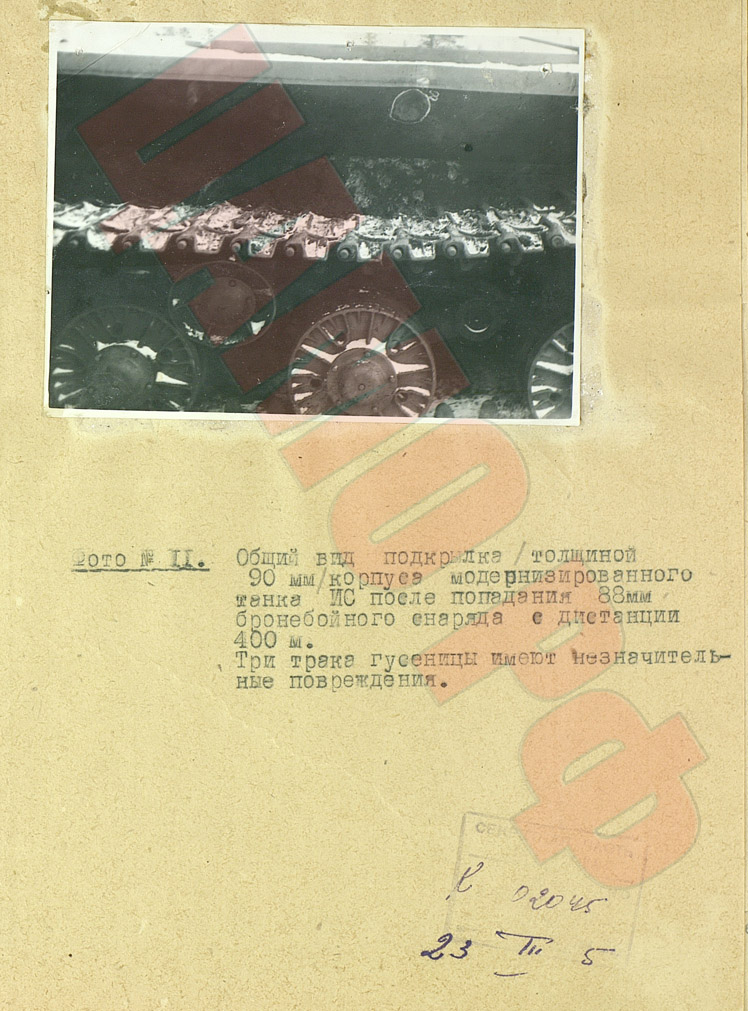
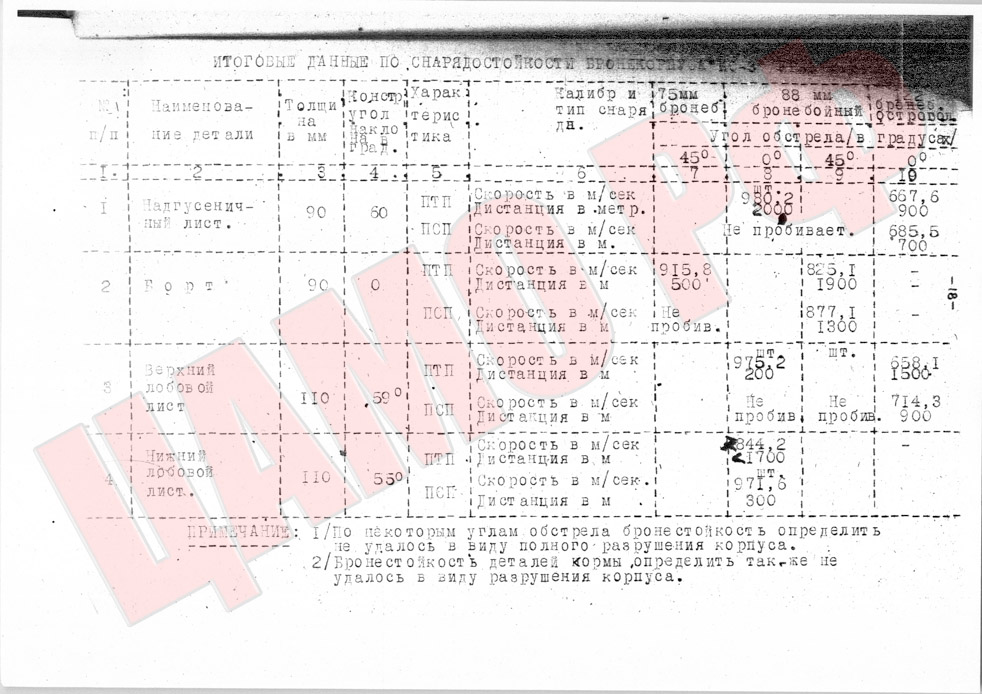
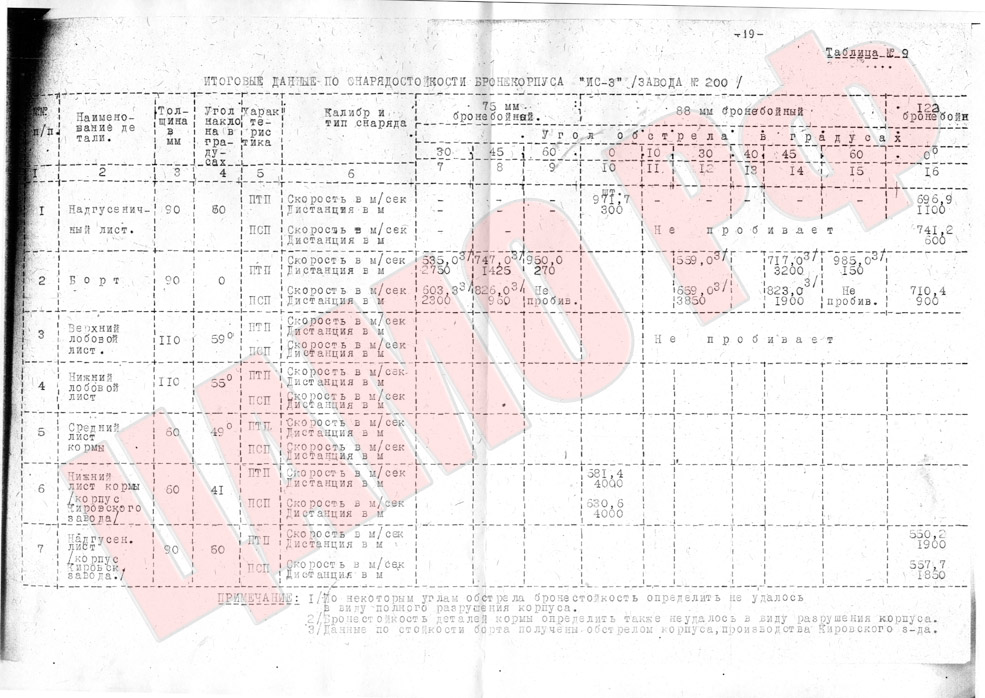
Great article and an interesting read! GG SS ;)
GG = Good game
SS did a good game or what?
Btw…gj SS!
Nice one SS and well done my son, youve grown…
+1
Buddy. We still have to eat Lorraines.
I am in shock!
My own son is in the kraken squadron T_T i served under the code name Lorraine 40Teen. Awarded a Radly-Walters against the donkeys in the great battles of 201X … and for my son to be in the resistance… SHAME ON YOU!
and I thought it was about testing the new IS-3 remodeled armor ingame..
good article SS
IS-3 remodel is a slight nerf IMO :P
I think you’ll find this interesting
http://forum.worldoftanks.com/index.php?/topic/284927-european-tank-discussion/page__st__160__pid__5765894#entry5765894
I also could use a little (a lot of) help with Hungarian and Polish branches
Was it “short” or “long” 88mm?
for sure short one. long one was ever produced in very small numbers
Probably short 88, since long should not have so much trouble at least on closer distances and some angles, definitely not “protection from 88 above 100metres at any angle”
8,8 cm KwK 36 L/51 for the short (the tiger gun)
and 8,8 cm KwK 43 L/71 for the long (the tiger II gun)
If I understand the table correctly, shell velocities for the 88 mm gun are approximately 970-980 meters per second. So definitely 8,8 cm KwK/PaK 43 L/71.
Hah! Eat your heart out wehraboos, King Tiger couldn’t have done shit. Or Ferdi, or Nashorn, or Jagdpanther :) Jagdtiger might have had a chance but then again JT would have been on fire 100km before the battlefield.
It is a L/71, short one was considered not relevant when designing future tank protection since early 1944.
Heh, it’s just another proof that german heavies are over-tiered…
True.
true that is why they were upgunned but not uparmoured. the everlasting and never ending story of balance versus history.
yeah and russian not???
90%* of the german tank (in the game) was used or developed during the war (or just “blue paperised” but the is-3 and evolved and the T-54 and co was post WWII tank so stop say german was overtier or other machination
*except the indien to the leopard
JT (128L55) only had better penetration at 2km and beyond. and what would have happened to the designers if the 88L71 had penetrated this hull? this vehicles was designed to protect against the weapons that were fired at it in this test.
still interresting read.
The penetration of 128 L/55 using Pzg43(APBC) is quoted at 228 at 100 meters in 30@ degrees, this can pen IS-3 relative easy.
IS-3 armor is designed to be immune to 88 L/71, so its only doing their planned job.
Except the LFP…
And the odds of being hit there, under normal combat conditions, by someone who does not even know about this weakness?
In RL, even for modern tanks with good firecontrols, one aims at center mass of the target and be glad when score a hit
Intentional aiming at weak spots are exception than norm and occurs at very close range
Be glad you score a hit ? I’ve hit a CD (read compact disc) pinned on a board of plywood at 1500m in the Leopard2A4. Several times.
I meant in battle conditions. Were you instructed to aim for specific parts of target tank – say, the lower hull – always? I think not.
hitting a static target in near-battlesight range just means that your gun’s mechanical accuracy is good. Besides, when you’re facing bad guys in battlesight range, I reckon that you’d want to think about sending rounds downrange as fast as possible rather than taking time with careful aiming – unless you’re absolutely sure you cannot defeat the target without hitting certain weak parts.
That’s the toughest CD I’ve ever heard of. I’m guessing it’s “Indestructible” by Disturbed.
IMO short cause 122mm penetrates and 88mm not and in all tests long 88mm got better penetrating capability than 122mm from same period.
(Which is not suprising, soviet creativity in avoiding Stalins fury is well known)
It has to do with target thickness overmatch and slope efficiency coefficient difference of each shell
Also, Stalin is not Hitler, weapons are not his toys and he could care less about some dull uninteresting technical documents
By the relevant timeframe Stalin had long ago learned to not meddle with trained specialists working in their respective fields you know. Also kind of dumbass reasoning there – if the engineers and testers were selling “the Boss” horse cakes which then proved to be such after thousands of the tanks had been built, how well do you figure they’d have fared when taken to task for such blatant “sabotage”?
Going back to the drawing board would seem like the RATHER safer option…
Another case of Soviet tank design in action.
Excellent performance during tests.
Abysmal performance in battle (six-day war).
To be fair, the IS-3 was meant for WW2 if the war went on for longer (the soviets did show off the IS-3 in their initial victory parade in Berlin in 1945 though).
By the sixties its obviously obsolete (on other hand, the centurion, also a little bit too late for WW2 worked well in the six-day war..)
Centurion (upgraded, but still…) even performed great during Yom-Kippur war against T-55s and T-62s
http://badasshistory.com/greengold.html
Except outcome of this engagement had nothing to do with tanks, it was combination of luck and good intelligence work.
AFAIR IS3 presented some problem to HEAT launching guns, as those sometimes failed to detonate due to IS3′s slopes
IS-3 designed: 1944
6-Day-War: 1967
Do you comprehend that there is a 23 years difference between the design and what you claim being abysmal performance?
Ah, why do I even bother, educating retards… they will never learn. Once a retard, always a retard. Keep trolling man!
Would you like some cheese with your whine?
I would like some sause please.
http://www.ospreypublishing.com/store/The-Six-Day-War-1967–Sinai_9781846033636
IS-3 armor worked as advertised. The 90mm M3, a gun contemporary to IS-3, couldn’t defeat the tank from frontal aspect.
AP simply bounced and HEAT suffered from fusing angle problems.
The low performance of Egyptian IS-3 is commonly attributed to inadequate desert operation capability (IIRC Soviets sold the kit as-is without modification)
And low training condition of the crews
And the usual shitty leadership one would assume. The Israelis apparently regarded the rank-and-file Egyptian soldiery as brave and skilled enough but the officer corps as mediocre at best.
Brave? certainly.
Skilled? seems to vary unit to unit rather wildly
Or maybe I’m mixing other middle east nations with Egypt…
You mean like some german designs vs chinese ones in WoT?
Do you realize difference between RL and game? Idiotic wehraboos are idiotic as always.
I realize it, and you?
Given the relative backwardness of the technology in the rice-cookers you’re not half as clever as you’re trying to be you know…
Yeah Yeah. Upgraded Centurions shooting from prepared positions in 20 years old tanks with badly trained crews.
There were no Cents shooting at IS-3 in 1967.
It was M48A2C Pattons (with 90mm, using AP and HEAT) vs IS-3s.
Pattons spotted them, opened fire at about 2km, could not penetrate with either AP or HEAT (US 90mm HEAT had problems with fusing on sloped targets).
Israelis split forces, sent one part to flank, while rest kept occupied.
Egyptians then started leaving prepared positions, and flanking tanks arrived, firing AP and HEAT into flanks. They passed through terrain that was considered by Egyptians to be impassable for tanks.
Egyptians panicked and started retreat, abandoning tanks.
Total score was 5 or 6 M48 KOd for 4 IS-3 KOd and 5 abandoned…
six days wars= britain 105 l7 high pres gun.
Plus don’t forget the HESH.
So long as you don’t hit the troll spaced armour lol. I gather spaced armour is quite effective vs HESH IRL; so long as the round doesn’t hit ‘internal’ armour it would be unlikely to cause much internal spalling.
If the armor is made properly spalling is highly limited.
There was going to be a limit to what WWII AP ammo could penetrate. After that it was up to APCR, HVAP and APDS to get the job done. I’d like to see how the hull would handle a hit on the center weld but the hits were strategically directed at center plate.
At least one of the shots from the second picture seems to have landed on the center weld
Though there are reports that early batch of production suffered from rather weak weld (which of course freaked out the relevant officials)
Great Article!!
Very good info there!
It just shows how incredible effective 3D sloping is against AP rounds. Altought 88L/71 penetrated more vertical armor, its worse in penetrating sloped armor.
Thats a common weakness of smal caliber shells, The IS-3 would have – imo – put an end to the german tank superiority during the war. The ROF advantage of german 88mm shells is pretty useless against this beast, the only (german) gun which would be able to penetrate this is the 12,8cm KwK L/55.
I find it somewhat ironic that in a sense the IS-3 actually validates the white elephant that was the Jagdtiger, whose gun was gross overkill against everything that actually fought in the war. :/
But they appeared in similar timeframe to be fair.
Even postwar West made 120mm totters just to crack IS-3 nut, which was considered as not your ordinary armor target
The JT predates the IS-3 a fair bit however and the Germans ought not have had any idea of the latter’s developement, though if you want to be very generous indeed you might assume a degree of predictive extrapolation from the extant trends of the “tank arms race” in the East.
But then again by the end of the war the Americans were also cramming 120 and 155mm guns in some of their experimental heavies…
They still gave it an unhistorical buff on the test server: the lower glacis’ slope was greatly increased, which is a HUGE buff to a tank that never even NEEDED a buff. Russian Bias ™.
buff?
what u talk ***** the current IS3 lfp is almost impossible to penetrate…
infact, the LFP is stronger as the UFP, UFP can be penetrate by 175 pen guns (122mm guns), while the LFP can bounce 225 pen guns, even when shot from below…
see this aswell: http://wotarmory.files.wordpress.com/2012/05/is-3-historical-armor-scheme.jpg
LFP has better angle as UFP, and is same thickness
Yea and because the game cant deal with the 3D slope of the UFP, the lower front plate is stronger.
Ugh, game deals with 3d sloping. From straight-on UFP is stronger then LFP and no, you can not pen it with 175mm pen guns.
However if there is side angle UFP loses efficiency quickly.
yea, right.
But for some reason the front ingame works like 110mm at 56°.
Same thing was tested and found out with the IS-7, on the good old wotarmory site.
Its UFP works like 150mm at 65°.
Seeing as how that would appear to be the listed glacis thicknesses and, more or less, presumably the compound angles of the “pikes” I’m not quite seeing your problem.
Besides chronic faggotry ofc. :v
Each angle shows angle for center weld seam for respective tanks.
IS-3 armor acts as it should. I believe Wotarmory calculation is a bit off because if you put in compound angle of 56 and 43, which is about 28 deg, and then add 5 deg normalization, you get about 202mm effective against AP
About Is-7, I think its frontal glacis armor vertical angle is not uniformly 65 deg, hence the “erratic” glacis protection performance.
Not the calculation of wotarmory, i mean the tests.
IS-7 armor was retested after the normalization nerf. The tester stated that the is-7 armor works like 150mm @65° (300mm effective). Only the +-25% made sure that the tank was penetrated by the 26x mm penetration gun. The website is closed but the pic can be find on google pictures.
IS-3 armor can also be penetrated from the front with 175mm pen guns. Which also suggests that its front works like 110mm at 56°.
Kellomies, the point is that the 2nd angle is not taken into account. You can test that if you dont believe it.
Although (!) the armor gets weaker if the tank is not shot right from the front. That however i dont understand yet. I guess there is a calculation error. Maybe someone can explain that.